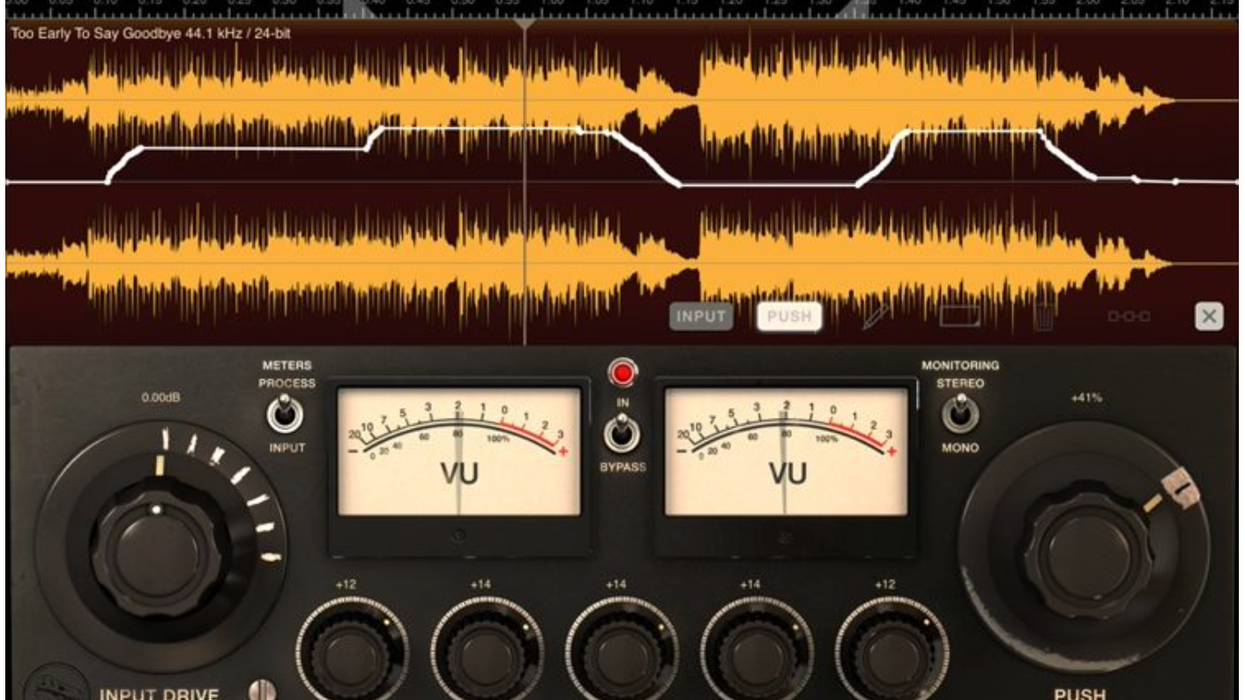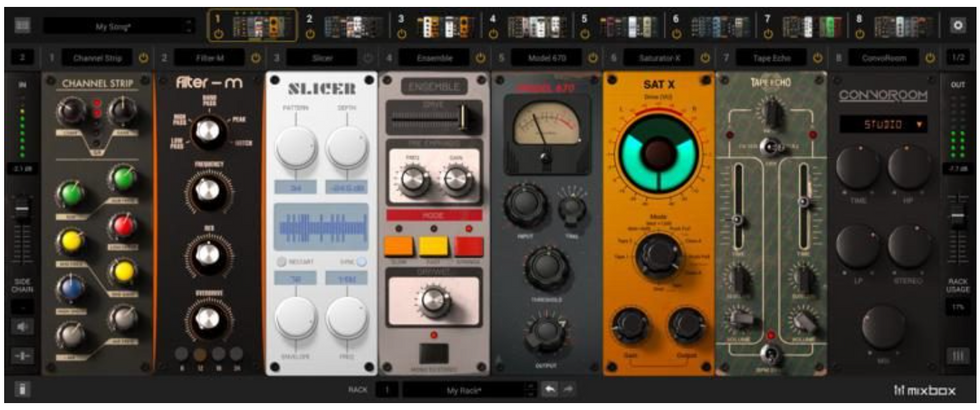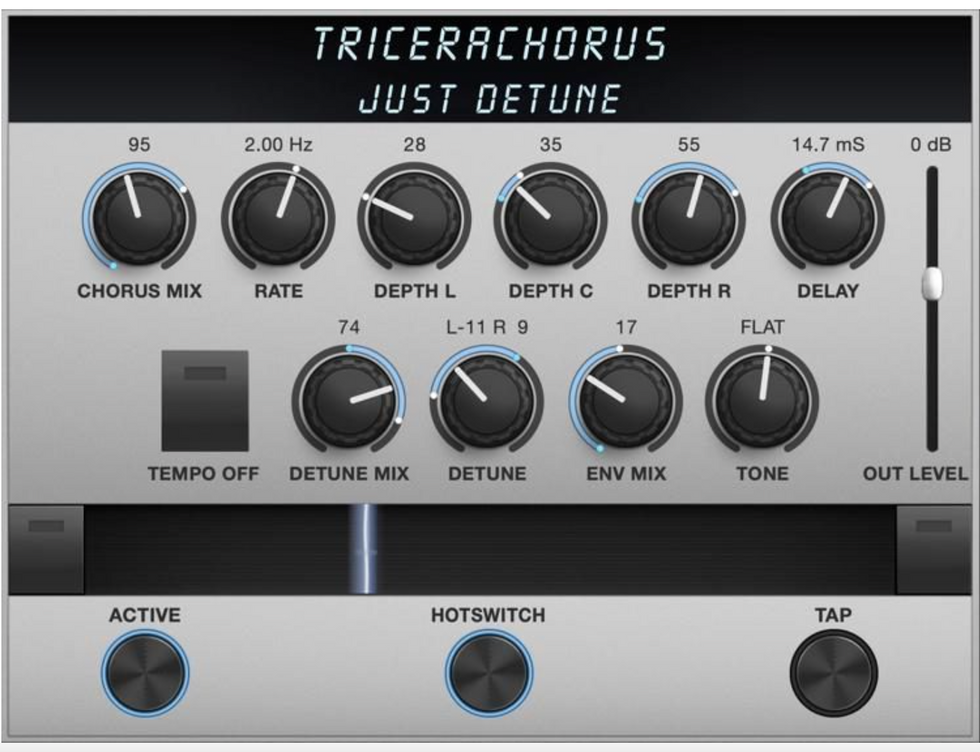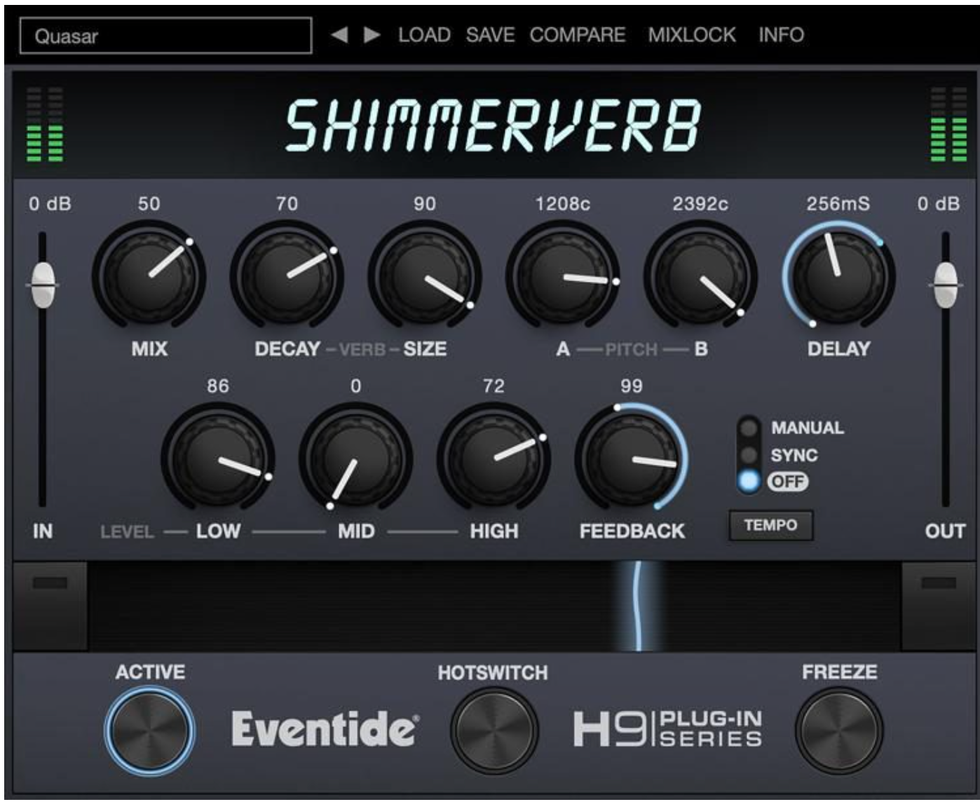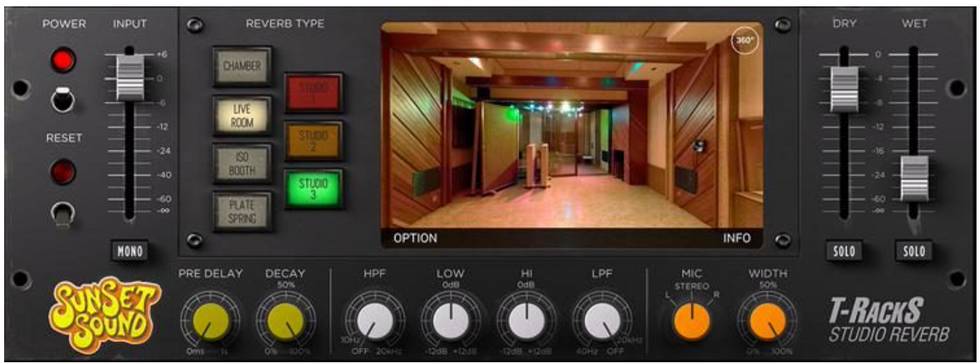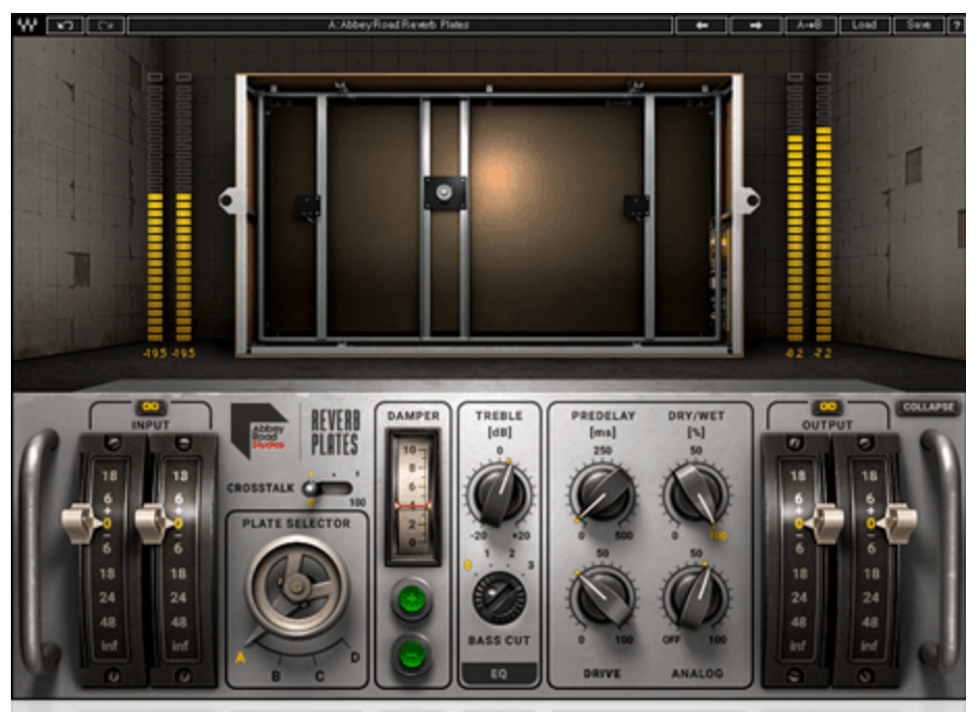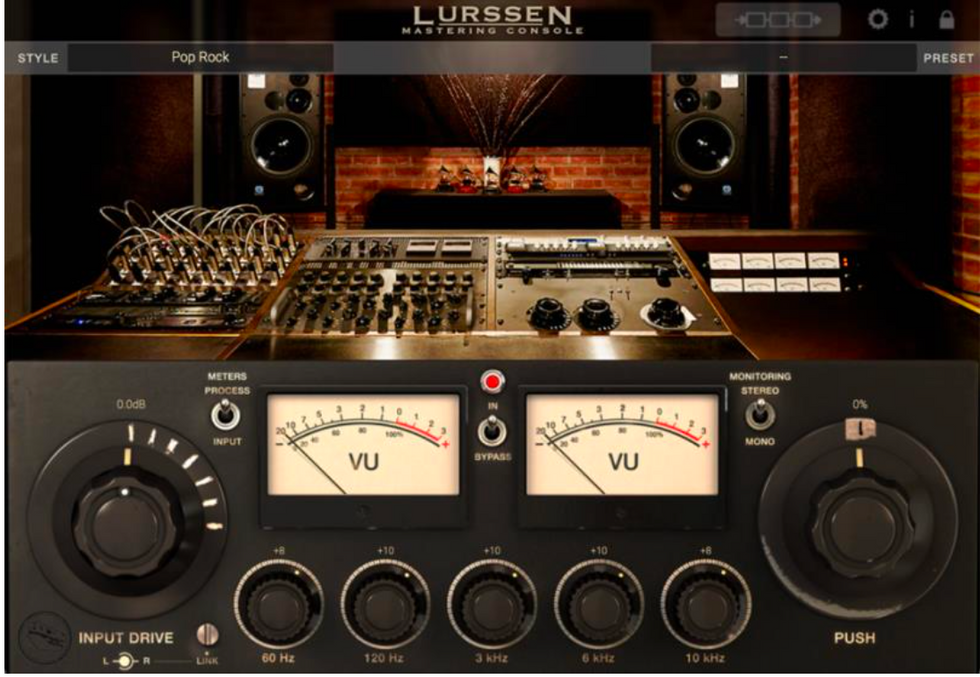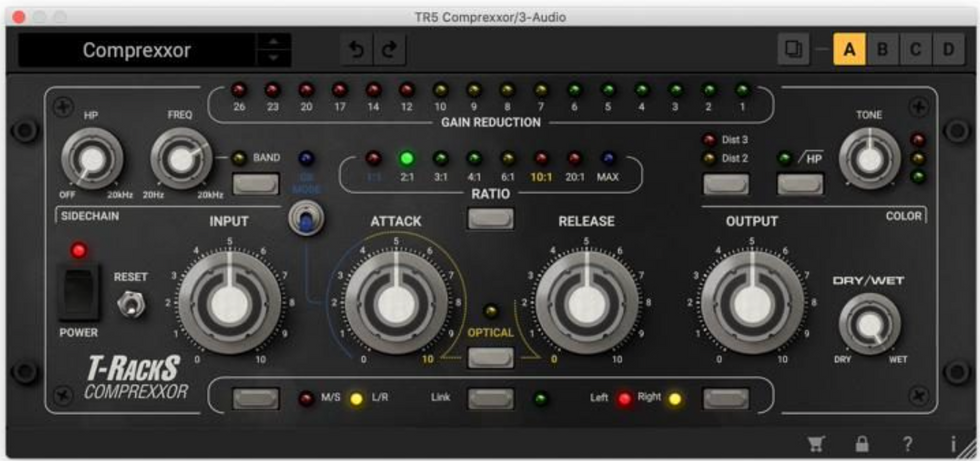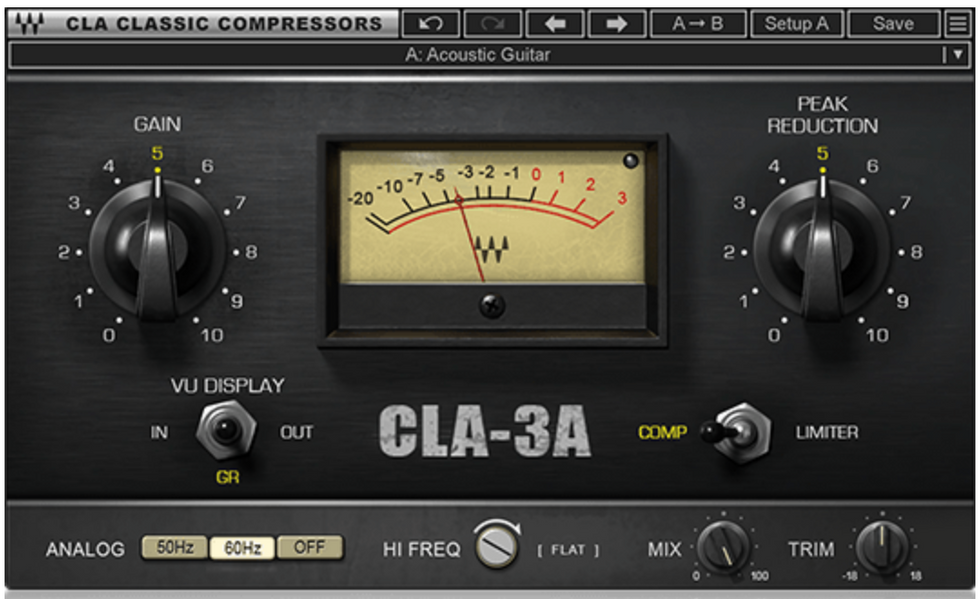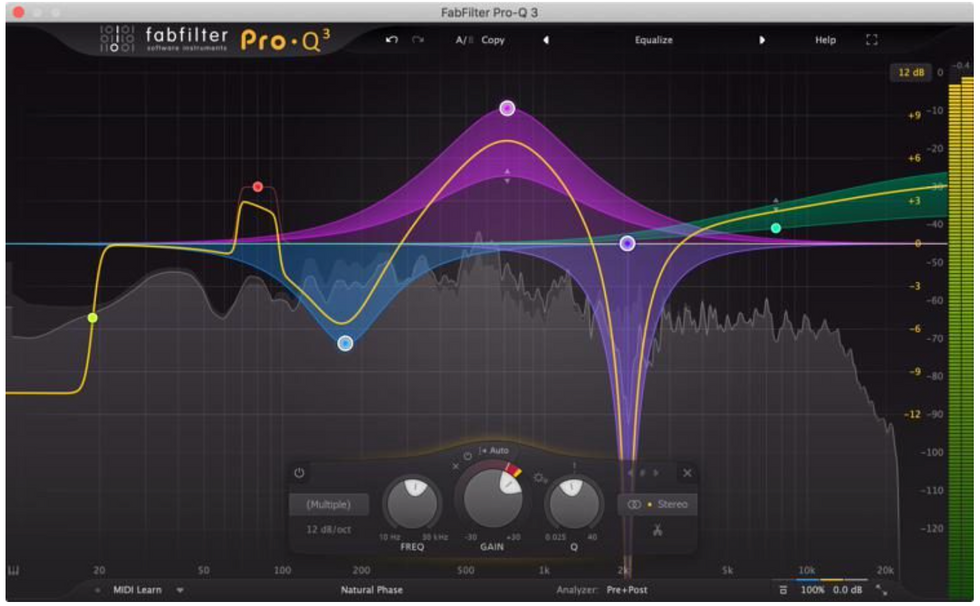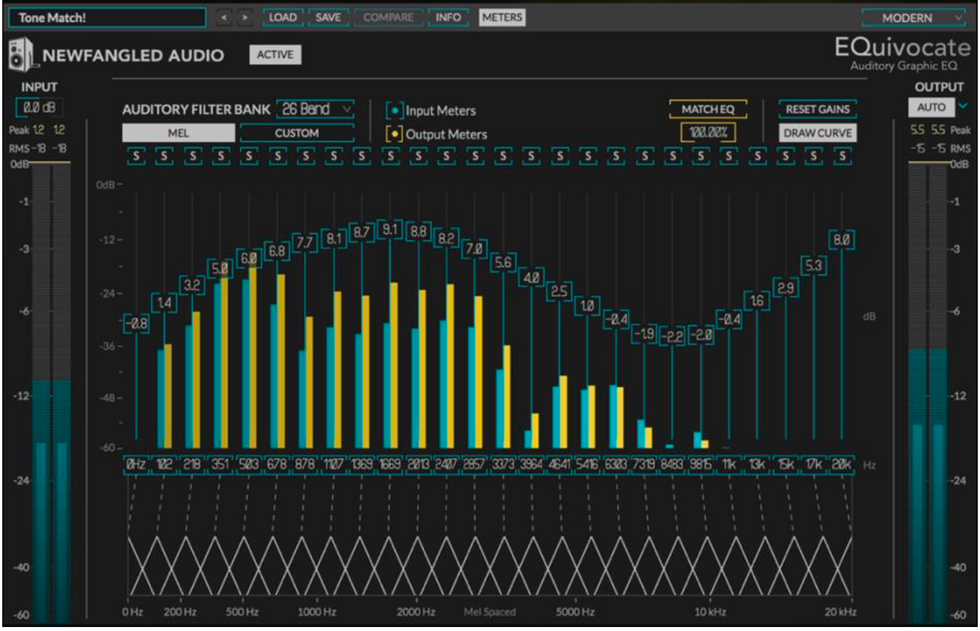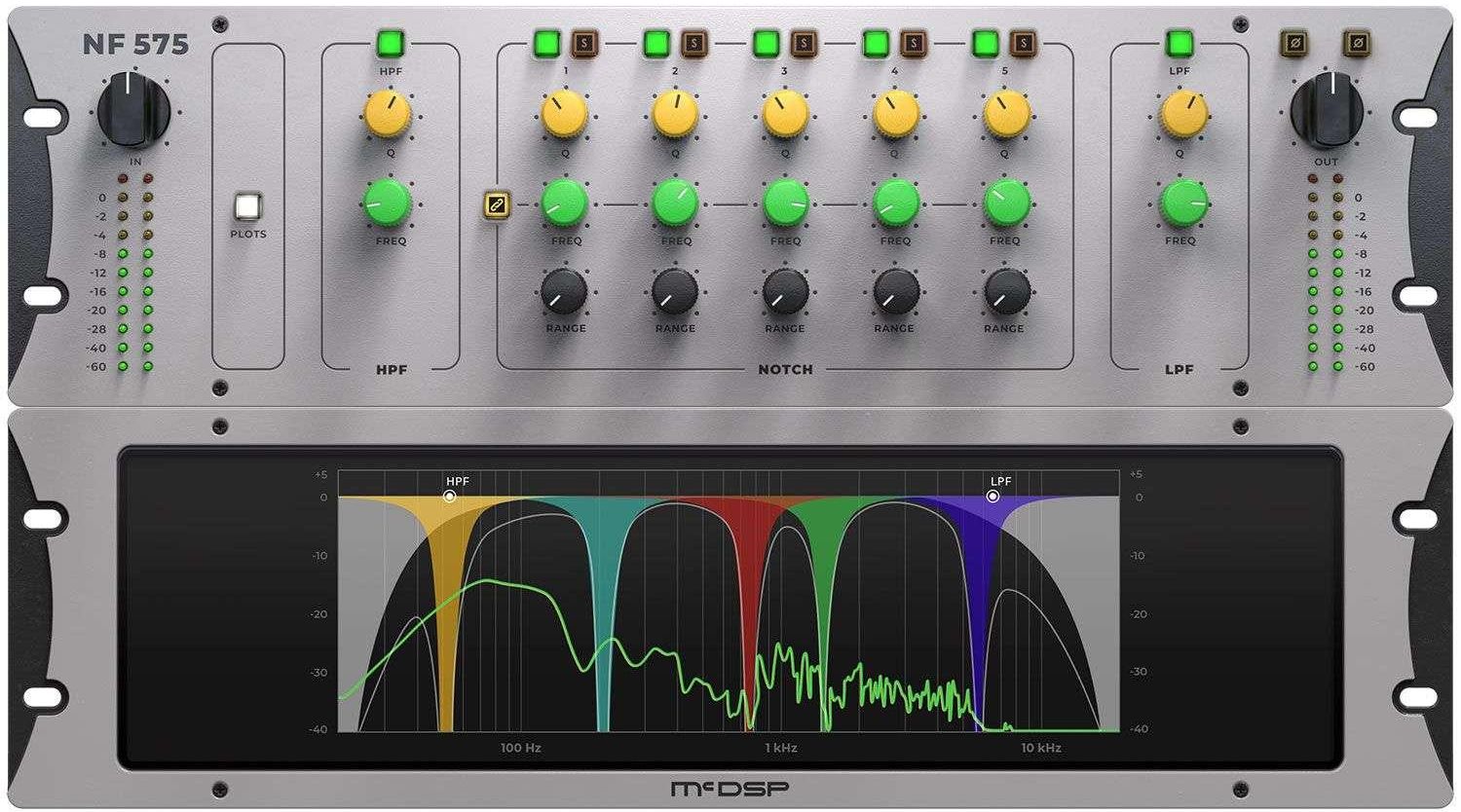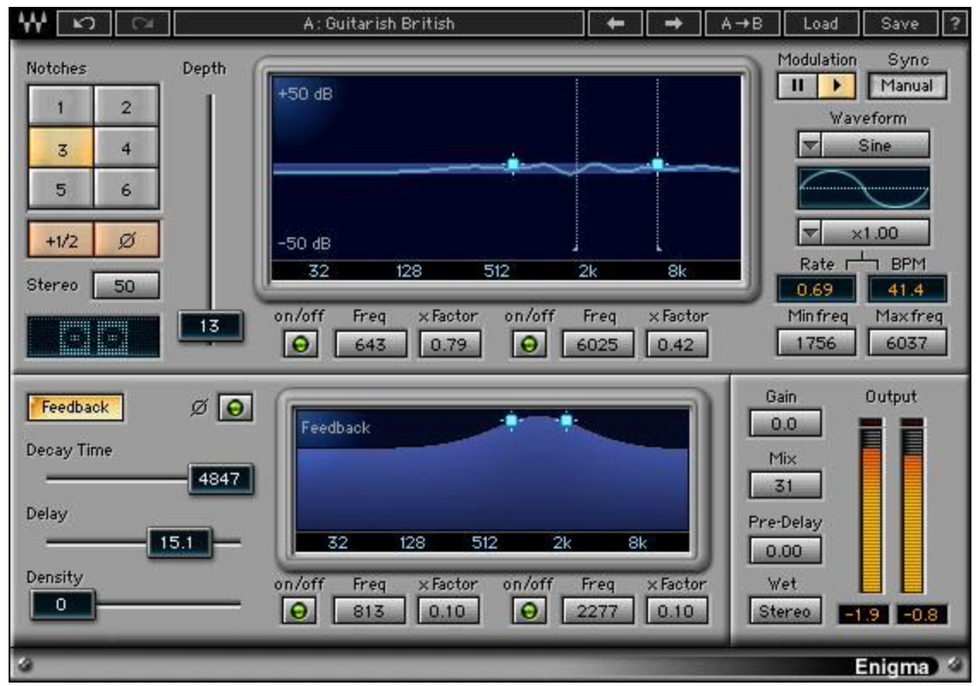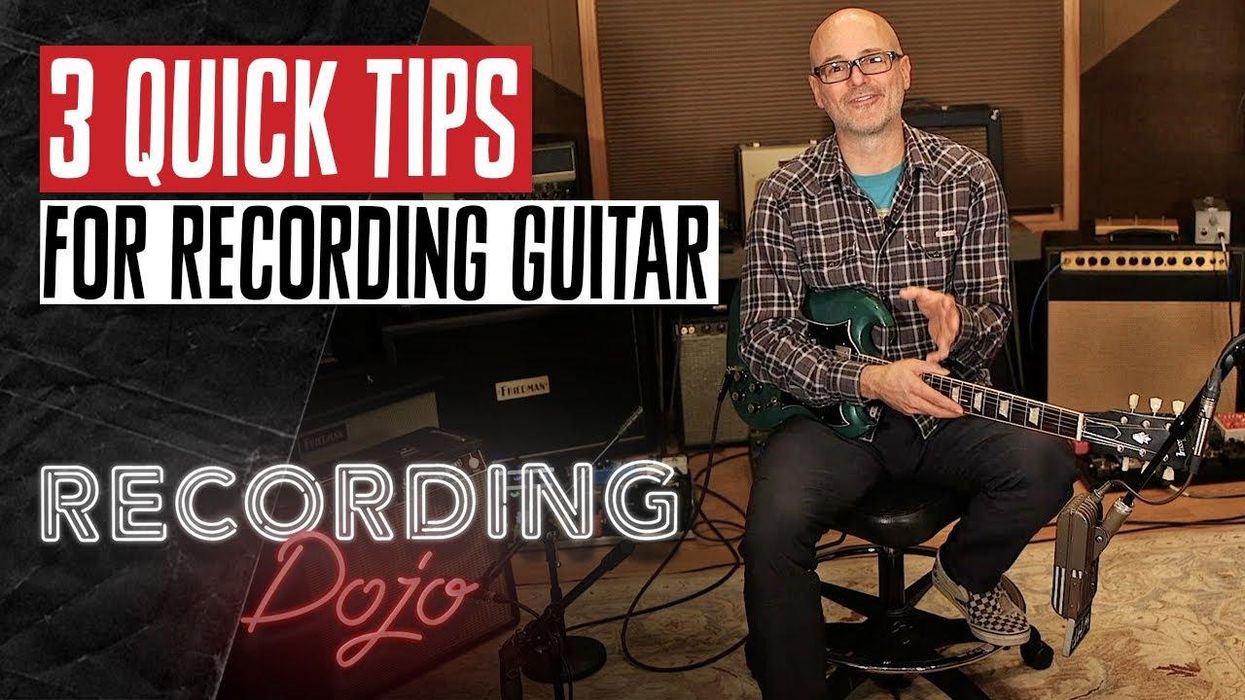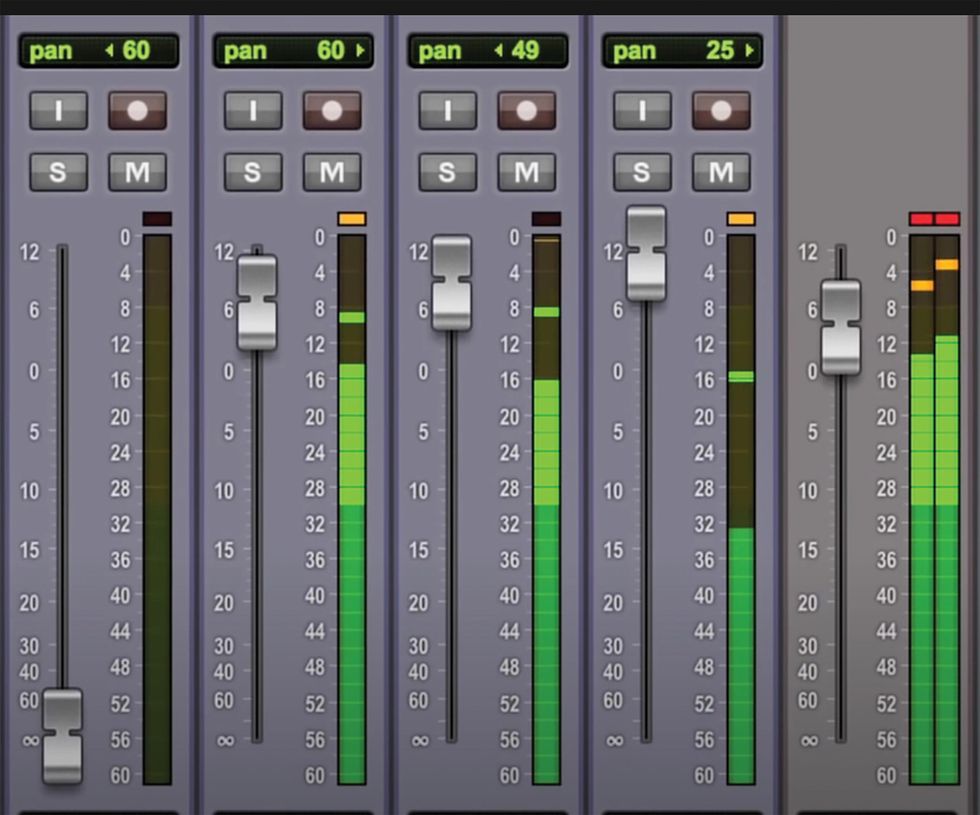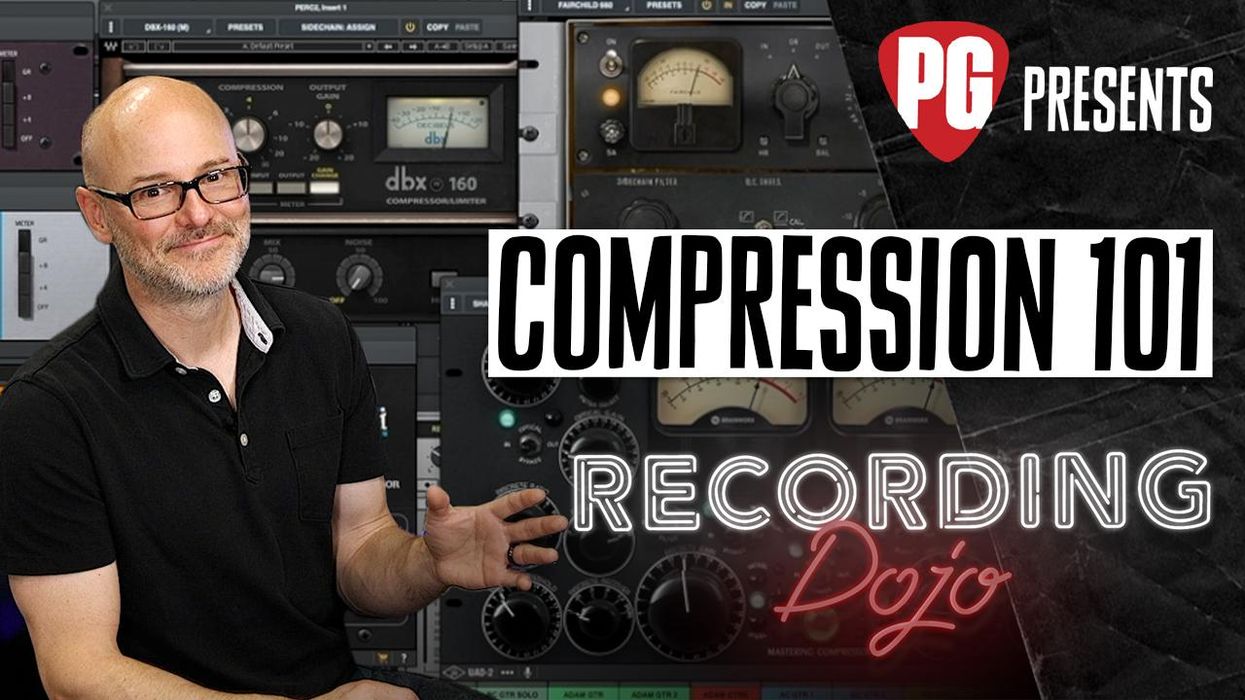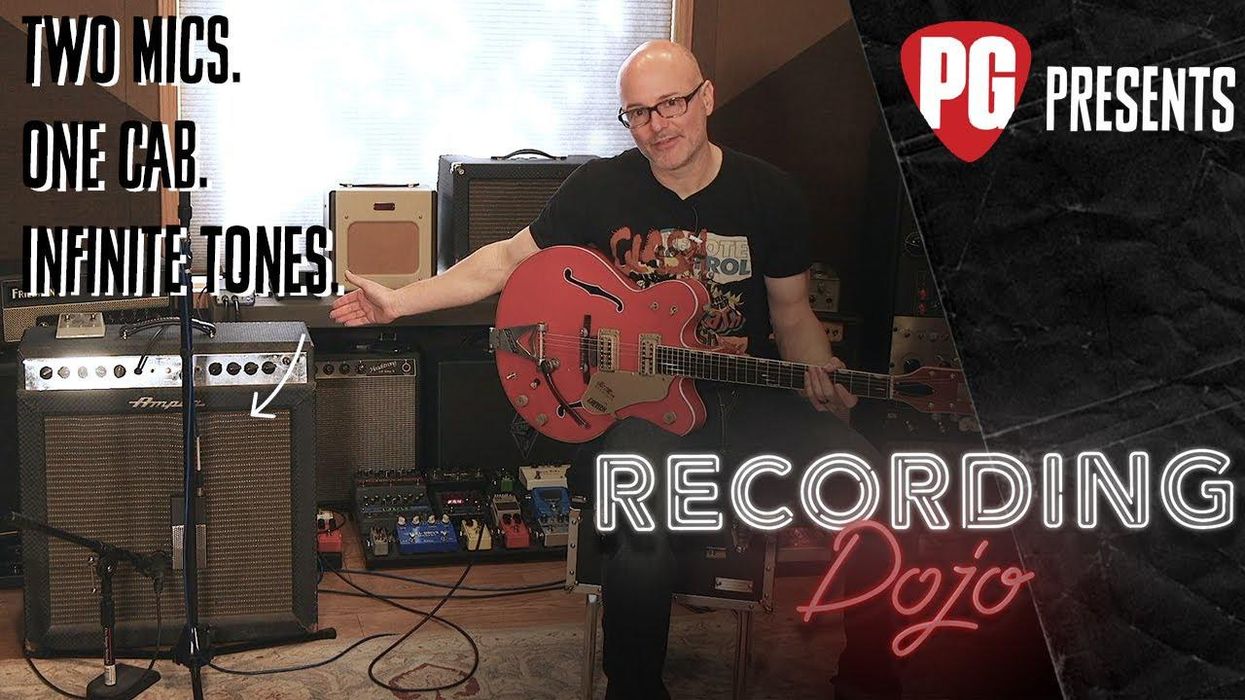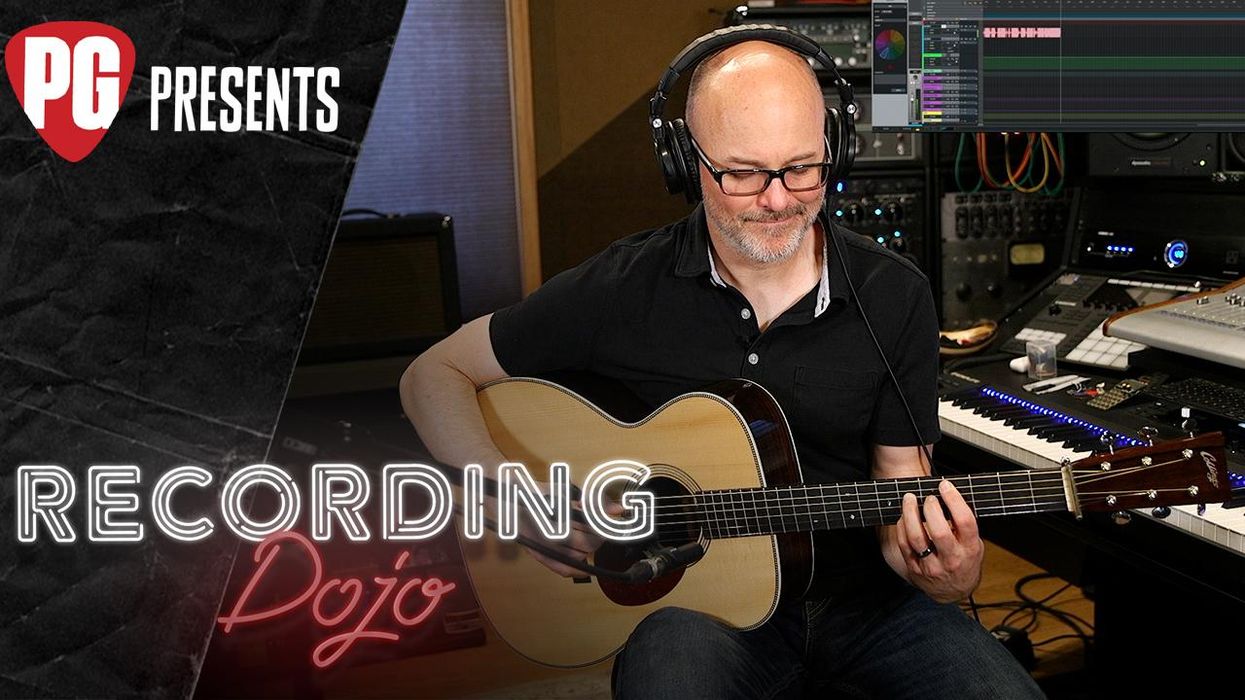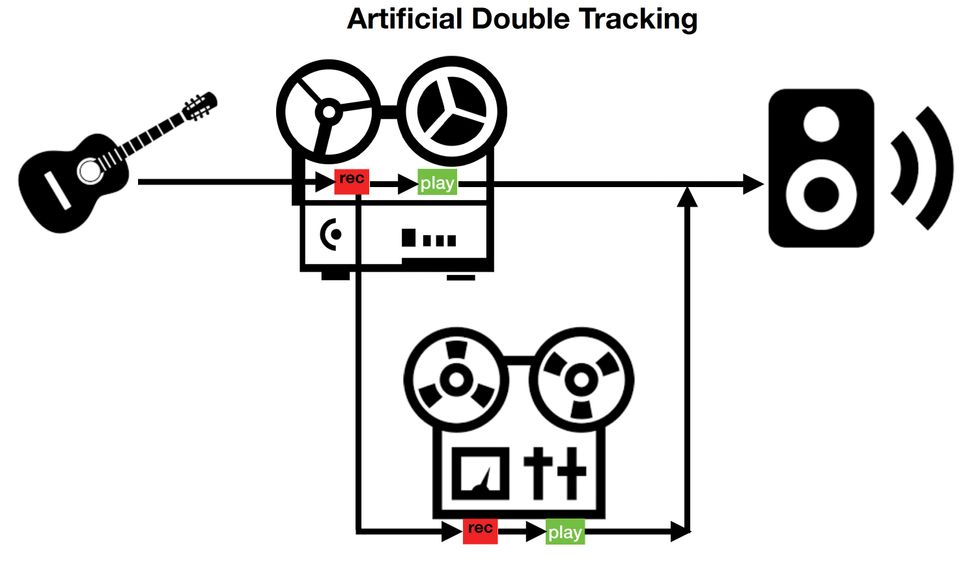This month we’re going to focus on ways
to track great acoustic guitar sounds. While
musicians and engineers have as many techniques
as they have opinions on this subject,
sometimes getting a sound you’re happy
with is simply a matter of listening first and
then approaching the recording with an
open mind.
Listen from the Right Perspective
For a minute, put aside the usual thought
about an individual player and musical style.
Think about the sound of your acoustic guitar
when you hear it—while you’re playing.
You’re not sitting in front of it—you actually
hear it below and in front of you. Did you
ever have someone else play it for you? Try
it: Stand in front of the instrument and just
listen. Ask your friend to use your pick, or,
if you play fingerstyle, to try to mimic your
picking technique. Just take that in.
In the studio, most of the time the objective
is to capture that natural essence of the guitar
you hear when you’re standing in front of
it. But why is this so hard? There are numerous
reasons, which we’ll discuss below.
Choose a Good Mic and Preamp
Let’s start with the microphone. We know
not all mics are alike. A $100 Shure SM57
does not sound like a $2000 DPA 4011. That
doesn’t necessarily make the Shure a bad
choice, but there’s a reason it’s not typically
used to capture acoustic guitar sounds. The
SM57 is quite colored, meaning it has a
sharp midrange peak and doesn’t capture
a ton of bottom. These sonic characteristics
work well for recording electric guitars. By
contrast, the DPA has a relatively smooth
response from 40 Hz to 20 kHz, which translates
into a more “natural” sound.
The point I’m making is that, when you’re
recording an acoustic guitar, try to reach
for a mic that has as little coloration as
possible, one that evenly captures the
wide spectrum of sound your instrument
puts out. Using EQ on a mic can help, but
only so much. You can only work with what
you’ve captured, so try to begin with a
clean, natural-sounding microphone.
While the preamp can make a difference,
it doesn’t influence the overall sound as
significantly as the mic. As with mics, when
I’m recording acoustic guitars, I reach for natural,
clean-sounding preamps, like those from
Grace, Focusrite, Earthworks, and Great River.
These units tend to give you back exactly
what you put into them. Yes, there are plenty
of excellent preamps out there, but those are
some I’ve used with good success.
Some of My Favorite Setups
I’ve achieved my best acoustic guitar sounds
using an Earthworks QTC-1 or DPA 4003 omni
mic placed between 6" to 12" out from where
the fretboard meets the soundhole. Omni
mics capture a 360-degree pattern of sound,
so the room is more of a factor in the overall
sonic picture. I’ll sometimes add the small DPA
4099G clip mic for a tight center focus.
I had great results with Al Di Meola using
a pair of Schoeps CMC 5s equipped with
cardioid capsules and positioned in an X/Y
configuration. We would also occasionally mix
in a pair of the Earthworks mentioned above
in split omni—that is, a few feet out from
the guitar and spaced a few feet apart. They
widened the image considerably and added
depth to the guitar tones. Sure, four mics is a
lot, but it was a guitar record, so it worked.
When using multiple microphones, you
have more options at mix time. By increasing
or decreasing the levels of the various
microphones, you can tailor the sound to the
needs of the song. Not every song needs a
big, wide guitar sound.
What About Going Direct?
Now lets talk about recording direct using
internal pickups. Many of today’s guitars
have an onboard pickup and preamp system
that outputs a signal directly from the
instrument via a 1/4" jack or even a balanced
XLR connector.
While onboard electronics are great for
live use, their utility is limited in the studio
because they tend to sound bright and midrangey.
There are quality variations amongst
all the brands, but, overall, that is their fundamental
character.
If an acoustic has a DI output, I will always
capture it when recording—just to have it
as an option during mixdown. Sometimes
you can blend the direct signal into the
overall mix to provide a little extra brightness
and clarity. EQ-wise, I tend to roll off
the entire bottom somewhere between
120 Hz and 150 Hz, pull down the midrange
between 600 Hz to 1 kHz, and
sometimes even goose the highs for a
brighter tone.
DIs are also useful to keep plugged into a
rack tuner to make quick, easy work of keeping
the guitar in tune for the session. I tend
to route the tuner output directly to the
studio preamp via its 1/4" input. However,
I would not suggest relying on DIs alone to
deliver a great guitar sound in the studio.
Keep It Natural
Certainly, there are countless other ways to
record acoustic guitars. But before your next
session, step back and listen to your guitar
and the room. Consider the kinds of mics
and preamps you’re using. And then just try
to keep it all as natural as possible.
Rich Tozzoli
Rich Tozzoli is a Grammy-nominated engineer and mixer who has worked with artists ranging from Al Di Meola to David Bowie. A life-long guitarist, he’s also the author of Pro Tools Surround Sound Mixing and composes for the likes of Fox NFL, Discovery Channel, Nickelodeon, and HBO.







